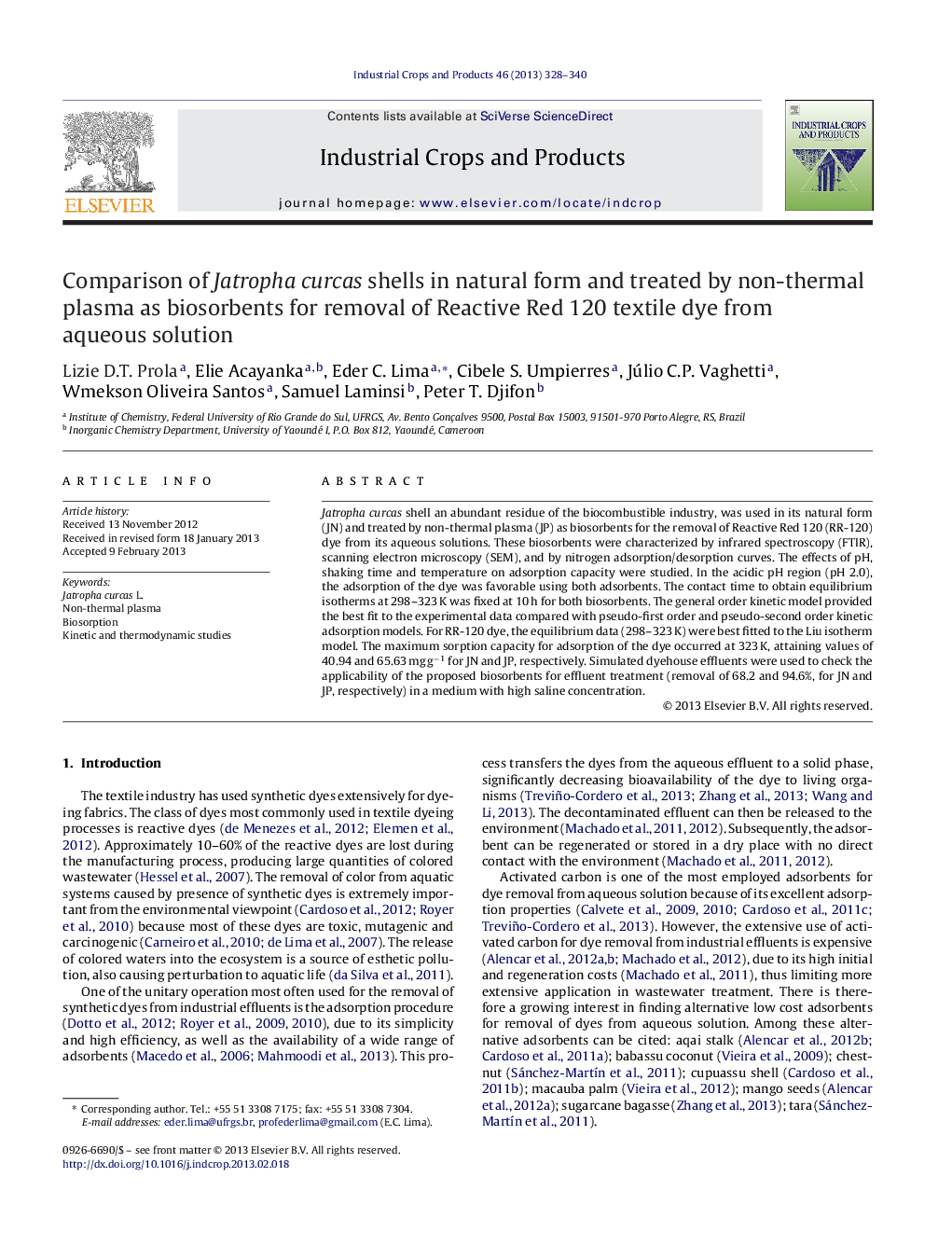| کد مقاله | کد نشریه | سال انتشار | مقاله انگلیسی | نسخه تمام متن |
|---|---|---|---|---|
| 4513867 | 1624863 | 2013 | 13 صفحه PDF | دانلود رایگان |

Jatropha curcas shell an abundant residue of the biocombustible industry, was used in its natural form (JN) and treated by non-thermal plasma (JP) as biosorbents for the removal of Reactive Red 120 (RR-120) dye from its aqueous solutions. These biosorbents were characterized by infrared spectroscopy (FTIR), scanning electron microscopy (SEM), and by nitrogen adsorption/desorption curves. The effects of pH, shaking time and temperature on adsorption capacity were studied. In the acidic pH region (pH 2.0), the adsorption of the dye was favorable using both adsorbents. The contact time to obtain equilibrium isotherms at 298–323 K was fixed at 10 h for both biosorbents. The general order kinetic model provided the best fit to the experimental data compared with pseudo-first order and pseudo-second order kinetic adsorption models. For RR-120 dye, the equilibrium data (298–323 K) were best fitted to the Liu isotherm model. The maximum sorption capacity for adsorption of the dye occurred at 323 K, attaining values of 40.94 and 65.63 mg g−1 for JN and JP, respectively. Simulated dyehouse effluents were used to check the applicability of the proposed biosorbents for effluent treatment (removal of 68.2 and 94.6%, for JN and JP, respectively) in a medium with high saline concentration.
► Improvement of sorption capacity by exposure of the biomass to non-thermal plasma.
► Plasma cleans the biomass surface by auto generated acid and also the functionalizing of surface.
► The maximum adsorption capacities were found at pH 2 and 323 K.
► The values were 40.94 and 65.63 mg g−1 for JN and JP, respectively.
► JP was effective to treat a simulated dye-house effluent.
Journal: Industrial Crops and Products - Volume 46, April 2013, Pages 328–340